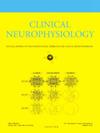在认知完整的参与者中,血液中p-Tau231的含量可调节动态功能连接
IF 3.7
3区 医学
Q1 CLINICAL NEUROLOGY
引用次数: 0
摘要
电生理学和血浆生物标志物是早期和非侵入性阿尔茨海默病检测的候选物。本文的目的是评估动态功能连通性的变化,与血浆病理标志物p-tau231在未受损成人脑磁图测量。方法纳入73例个体。静态和动态功能连通性计算使用泄漏校正振幅包络相关。计算各试验中每个源的强度熵。进行数据驱动的统计分析以发现功能连通性与血浆p-tau231水平之间的关联。回归模型用于评估其他变量对集群连通性的影响。结果额颞动态连通性与p-tau231水平呈正相关。线性回归模型确定了影响动态功能连通性的病理、功能和结构因素。结论使用dFC可以很早就观察到与AD病理相关的变化,dFC可能比sFC对细微的改变更敏感。此外,考虑到dFC与其他血浆、功能和结构指标的关系,dFC的早期增加似乎具有病理性质。这些结果扩展了先前关于AD风险健康个体动态功能连接的文献,突出了其作为早期、非侵入性和更敏感的生物标志物的实用性。本文章由计算机程序翻译,如有差异,请以英文原文为准。
Dynamic functional connectivity is modulated by the amount of p-Tau231 in blood in cognitively intact participants
Introduction
Electrophysiology and plasma biomarkers are early and non-invasive candidates for Alzheimer’s disease detection. The purpose of this paper is to evaluate changes in dynamic functional connectivity measured with magnetoencephalography, associated with the plasma pathology marker p-tau231 in unimpaired adults.
Methods
73 individuals were included. Static and dynamic functional connectivity were calculated using leakage corrected amplitude envelope correlation. Each source’s strength entropy across trials was calculated. A data-driven statistical analysis was performed to find the association between functional connectivity and plasma p-tau231 levels. Regression models were used to assess the influence of other variables over the clusters’ connectivity.
Results
Frontotemporal dynamic connectivity positively associated with p-tau231 levels. Linear regression models identified pathological, functional and structural factors that influence dynamic functional connectivity.
Conclusions
Changes associated to AD pathology can be observed very early on using dFC, which might be more sensitive to subtle alterations than sFC. Furthermore, this early increase in dFC appears to have a pathological nature given its relationship with other plasma, functional and structural measures.
Significance
These results expand previous literature on dynamic functional connectivity in healthy individuals at risk of AD, highlighting its usefulness as an early, non-invasive and more sensitive biomarker.
求助全文
通过发布文献求助,成功后即可免费获取论文全文。
去求助
来源期刊

Clinical Neurophysiology
医学-临床神经学
CiteScore
8.70
自引率
6.40%
发文量
932
审稿时长
59 days
期刊介绍:
As of January 1999, The journal Electroencephalography and Clinical Neurophysiology, and its two sections Electromyography and Motor Control and Evoked Potentials have amalgamated to become this journal - Clinical Neurophysiology.
Clinical Neurophysiology is the official journal of the International Federation of Clinical Neurophysiology, the Brazilian Society of Clinical Neurophysiology, the Czech Society of Clinical Neurophysiology, the Italian Clinical Neurophysiology Society and the International Society of Intraoperative Neurophysiology.The journal is dedicated to fostering research and disseminating information on all aspects of both normal and abnormal functioning of the nervous system. The key aim of the publication is to disseminate scholarly reports on the pathophysiology underlying diseases of the central and peripheral nervous system of human patients. Clinical trials that use neurophysiological measures to document change are encouraged, as are manuscripts reporting data on integrated neuroimaging of central nervous function including, but not limited to, functional MRI, MEG, EEG, PET and other neuroimaging modalities.
 求助内容:
求助内容: 应助结果提醒方式:
应助结果提醒方式:


